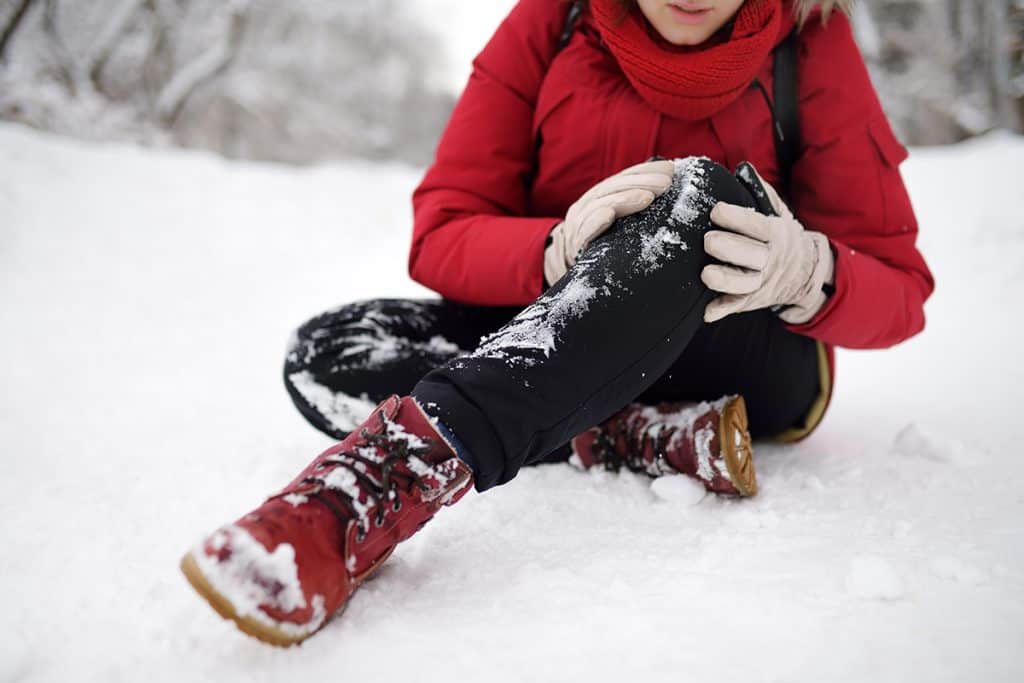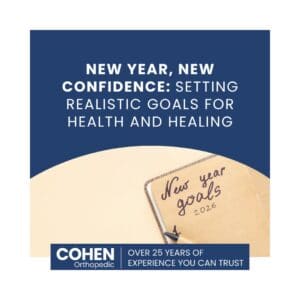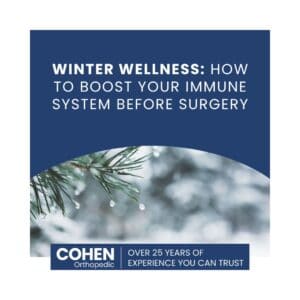3 Most Common Orthopedic Injuries in Winter

Ohio winters are filled with fun activities in the frigid air. From sledding and ice skating to snowshoeing and skiing, adults and kids alike enjoy time in the ice and snow. Unfortunately, the cold weather brings an increased risk of muscle and joint injuries. A sudden pivot in the ice rink or a fall on a slick sidewalk can damage your body in the blink of an eye.
Dr. Brian Cohen hopes you enjoy winter activities safely, and remember to watch out for these common orthopedic injuries:
1. Torn ACL
The ACL (anterior cruciate ligament) is a major part of stabilizing the knee, and trauma to this area can cause knee instability. An ACL injury may require surgery if you play competitive sports or experience knee buckling when you walk or run. These injuries happen when you suddenly twist, switch directions or stop, which may occur during ice skating, skiing and other winter activities. Winter weather that coats the ground in snow and ice can lead to slip and falls, and one awkward landing or sudden pivot can affect this ligament.
ACL surgery for a torn ligament typically involves replacing it with a tendon graft from a cadaver or another part of the patient.
2. Torn Meniscus
One of the most common injuries to the knee is a torn meniscus. This C-shaped cartilage is found inside and outside the knee compartment. The cartilage may tear when you rotate or twist the knee forcefully, causing a popping feeling, stiffness, swelling and pain. The R.I.C.E. method (rest, ice, compression and elevation) may relieve symptoms, but a torn meniscus can require surgery if you have significant pain, stiffness or locking of the knee. Skiing is a common cause of torn meniscus injuries.
Meniscus repair, meniscectomy and arthroscopic procedures are often appropriate treatments for meniscal tears when conservative options fail.
3. Wrist Fracture
Your body instinctively reaches out a hand when you start to fall, which often happens in the winter due to icy steps and walkways. A wrist fracture may occur when you try to catch yourself during a fall. A broken wrist may heal with a splint or cast, but some cases require surgery that can involve screws, plates or pins that hold the small wrist bones and forearm bone in the correct position for healing.
How to Avoid Winter Orthopedic Injuries
You can still enjoy fun winter activities in Columbus while protecting your muscles and joints from injury. Make sure you stretch for about 10 minutes before and after your event to loosen tight muscles. Eat a well-balanced diet that includes calcium and vitamin D and boost your health through resistance training and weight-bearing exercises that strengthen connective tissues and muscles. Always have someone with you during a winter sport and wear the appropriate gear such as ski or snowboarding goggles and helmets.
Dr. Cohen is a renowned orthopedic surgeon who has helped more than 30,000 patients heal from orthopedic injuries through surgery. “The Cohen Advantage” offers patients the safest and most effective surgical options using the latest technologies, including MAKO robotic-assisted knee replacement.
Contact Cohen Orthopedic About Your Musculoskeletal Injury
Cohen Orthopedic in Columbus hopes you safely enjoy these snowy sports and activities. If you experience a knee, hip or shoulder injury this winter or a previous injury worsens, contact Dr. Cohen to schedule an appointment as soon as possible.










